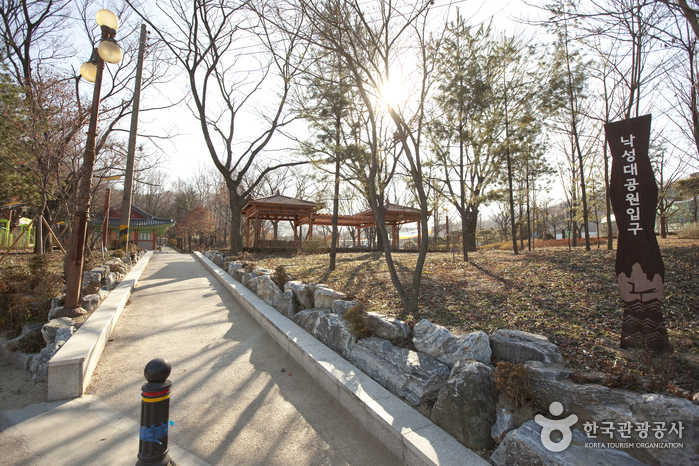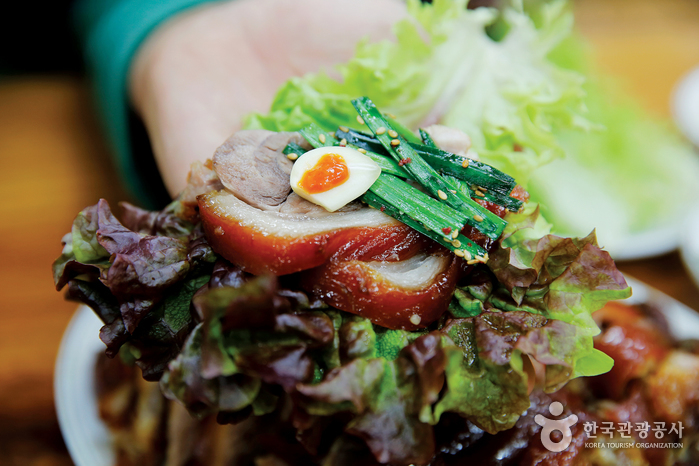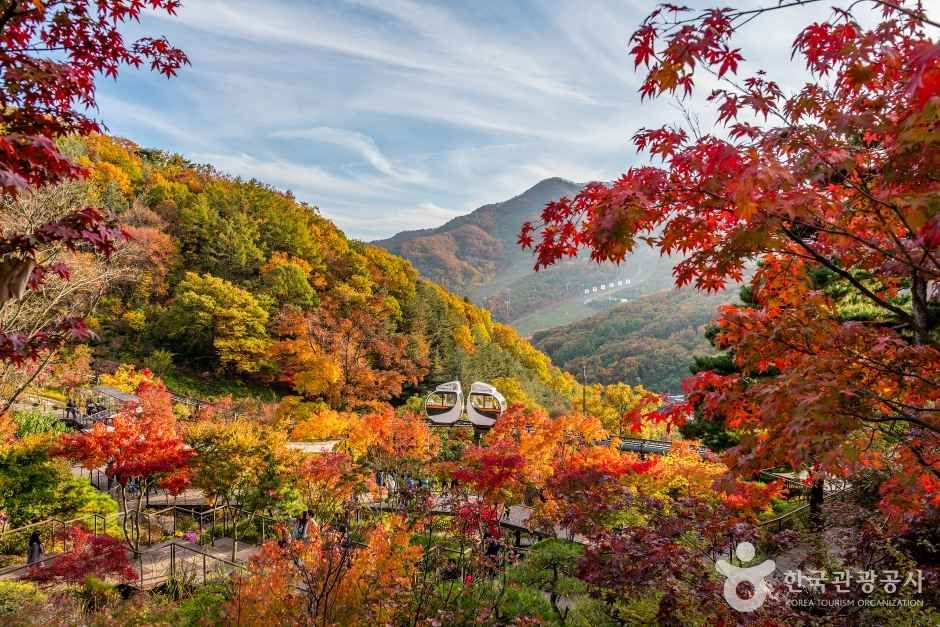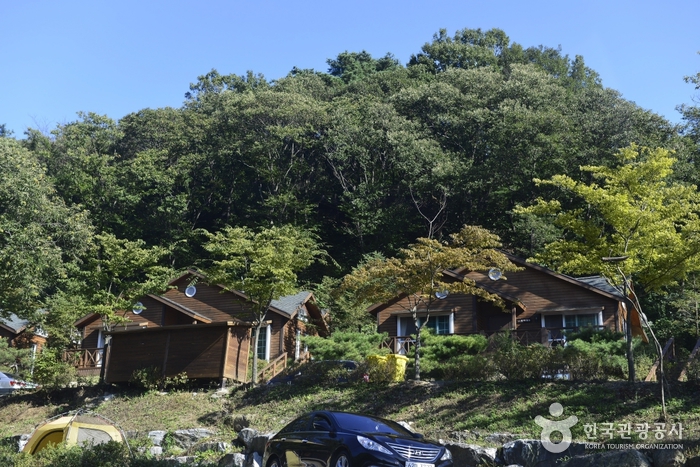Olive Young - Seoul Forest Station Branch [Tax Refund Shop] (올리브영 서울숲역점)
16.3Km 2024-06-26
1F, 50, Wangsimni-ro, Seongdong-gu, Seoul
-
Olive Young - Alleyway Gwanggyo Branch [Tax Refund Shop] (올리브영 광교앨리웨이점)
16.3Km 2024-06-28
1F, #127, 80, Gwanggyohosugongwon-ro, Yeongtong-gu, Suwon-si, Gyeonggi-do
-
Sejong University Museum (세종대학교 박물관)
16.3Km 2022-09-16
209, Neungdong-ro, Gwangjin-gu, Seoul
+82-2-3408-3876
Sejong University Museum exhibits folk art, wooden crafts, clothing, accessories, pottery, paintings and calligraphy collected for over 40 years by the couple who founded the present day Sejong University, Dr. Ju Young-ha and Dr. Choi Ok-ja. This museum has its origins in the Soodo Gallery, which was built in Chungmuro, the campus’ original location, in 1959. Needing more space to house additional artifacts, the museum moved to its current location, which first opened on May 5, 1973 in a four-story concrete building inspired by traditonal tower design from the Baekje era. This building was later expanded on May 20, 1977.
After the university’s name was changed to Sejong University in 1979, the museum was also renamed the Sejong University Museum. The museum showcases unique artifacts to both scholars and students from home and abroad in contribution to the research of Korea’s culture, arts, and archeology.
Seongsu Museum (성수미술관)
16.3Km 2024-11-15
39 Seongsuil-ro 8-gil, Seongdong-gu, Seoul
rom drawing to coloring
This is a canvas drawing cafe where Yuna of ITZY visited and experienced art. It is decorated as a cultural living space where you can draw and color. Drawing tools such as sketches, acrylic paints, and brushes are provided. It is also interesting that there is a mobile phone holder so that you can capture your drawing as a time-lapse.
Gwanaksan Mountain Nakseongdae Park (관악산 낙성대공원)
16.3Km 2021-07-16
77, Nakseongdae-ro, Gwanak-gu, Seoul
+82-2-879-6525
Nakseongdae Park was built as a tribute to General Kang Gam-chan (948-1031) of the Goryeo dynasty. In 1973, the city of Seoul reorganized the birthplace of General Kang, resulting in changes to the park. Located inside the park are Anguksa Shrine, the general’s birthplace, and a three-story stone pagoda, which was made during the Goryeo dynasty. The 4.48-meter-high pagoda is made of granite, and is called “Kang Gam-chan Tap (pagoda)” or “Kang Gam-chan Nakseongdae Tap”.
*Anguksa Shrine
Anguksa is a shrine built in 1974 emulating the wooden architecture style of the Goryeo era. The shrine has high ceilings and houses the portrait of General Kang Gam-chan. The shrine is located on the road leading to the back gate of Seoul National University and has become a popular place in the area.
*Nakseongdae Yuji
Nakseongdae Yuji is the birthplace of General Kang Gam-chan and the original location of the three-story pagoda. During the maintenance of Nakseongdae area in 1973, the pagoda was moved into the vicinity of Anguksa Shrine, and a two-meter tall monument was erected in its original location to mark the historical significance of the site.
Seongsu Jokbal (성수족발)
16.3Km 2021-03-24
7, Achasan-ro, 7-gil, Seongdong-gu, Seoul
+82-2-464-0425
It is considered one of Seoul's top 3 Jokbal (pig’s feet) restaurants. This Korean dishes restaurant is located in Seongdong-gu, Seoul. The most famous menu is braised pigs' feet.
Hwadam Botanic Garden (화담숲)
16.4Km 2025-06-30
278-1 Docheogwit-ro, Gwangju-si, Gyeonggi-do
+82-31–8026–6666
Hwadam Botanic Garden is an eco-friendly arboretum located within Konjiam Resort in Gwangju, Gyeonggi-do, a 40-minute drive away from Seoul. In an effort to revive the country's forest ecosystem, LG Evergreen Foundation brought in approximately 4,300 types of exquisite and domestic plants to form a forest park divided into 17 themes. "Hwadam" can be translated into "friendly communication," a name given to the forest in hopes that the area serves as means for people to communicate with nature. While the forest is designed to offer an environmentally friendly atmosphere to humans, the ecosystem and habitats of the forest are well-preserved, serving as a home to many living species.
Yongin Recreational Forest (용인자연휴양림)
16.4Km 2021-10-23
220, Chobu-ro, Cheoin-gu, Yongin-si, Gyeonggi-do
+82-31-336-0040
Yongin Recreational Forest (162 ha) is perched on the southern foothills of Jeonggwangsan Mountain (alt. 562 m) in Yongin, Gyeonggi-do. Facilities include lodging facilities, camping zone, meeting rooms, children’s playground, and walking paths.
Changnyongmun Gate (창룡문)
16.4Km 2023-09-25
697, Gyeongsu-daero, Paldal-gu, Suwon-si, Gyeonggi-do
Changnyeongmun Gate, the eastern gate of Hwaseong Fortress, is similar in shape and size to Hwaseomun Gate to the east. Something to take note of is the nameplate carved into the wall left of the gate. While the names on the polished granite at the other three main gates have become obscure over time, the nameplate at Changnyeongmun Gate is still clearly visable.
Manseokgeo Park (만석거공원)
16.5Km 2024-12-23
1087 Jeongjo-ro, Jangan-gu, Suwon-si, Gyeonggi-do
Manseokgeo Park centers around Manseokgeo Reservoir, built in 1795 to combat drought by transforming barren land into a water source. The park features a pavilion, tennis courts, a playground, small convenience store, an outdoor concert hall, and an art museum. In spring, cherry blossoms bloom, while summer brings beautiful lotus flowers to the lake. A well-maintained walking trail encircles the reservoir, and at night, the rainbow-colored musical fountain provides a spectacular view.








 English
English
 한국어
한국어 日本語
日本語 中文(简体)
中文(简体) Deutsch
Deutsch Français
Français Español
Español Русский
Русский